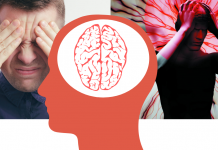
Mental health treatment has evolved significantly over the years, moving from cruel and inhumane practices in asylums to more humane and effective therapies. The history of mental health treatment is a dark and troubling one, with individuals being locked away in institutions, subjected to barbaric treatments, and stigmatized by society. However, advances in psychology, psychiatry, and medicine have led to a more compassionate and patient-centered approach to treating mental illness.
Asylums, also known as psychiatric hospitals or mental institutions, were the primary form of treatment for individuals with mental illness for centuries. These institutions were often overcrowded, understaffed, and unsanitary, leading to poor living conditions and mistreatment of patients. Many individuals were forcibly removed from their communities and families and institutionalized for the rest of their lives.
The treatments administered in asylums were often brutal and inhumane. Patients were subjected to electroshock therapy, lobotomies, and other experimental procedures without their consent. These treatments were meant to control behavior and “cure” mental illness, but instead, they often caused further harm and trauma to the patients.
In the late 19th and early 20th centuries, a new approach to mental health treatment emerged with the rise of psychoanalysis and talk therapy. Sigmund Freud, a pioneer in the field of psychology, developed the theory of the unconscious mind and the role of early childhood experiences in shaping behavior. Freud’s theories laid the foundation for psychotherapy, a form of treatment that focuses on exploring and resolving unconscious conflicts and emotional issues.
The development of psychotherapy led to the establishment of counseling centers, psychiatric clinics, and outpatient mental health services. Patients were no longer confined to asylums but had the opportunity to receive treatment in a more supportive and less restrictive environment. Therapy sessions were conducted by trained professionals, such as psychologists, psychiatrists, and social workers, who used a variety of techniques to help patients manage their symptoms and improve their overall well-being.
The mid-20th century saw the introduction of psychotropic medications, such as antidepressants, antipsychotics, and mood stabilizers, which revolutionized the treatment of mental illness. These medications helped to alleviate symptoms of depression, anxiety, bipolar disorder, and schizophrenia, allowing patients to live more functional and fulfilling lives. However, the overprescription and misuse of these medications have also raised concerns about their long-term effects and potential for abuse.
In recent decades, there has been a growing emphasis on holistic approaches to mental health treatment, focusing on the connection between the mind, body, and spirit. Alternative therapies, such as yoga, meditation, art therapy, and mindfulness, have gained popularity as complementary treatments to traditional psychotherapy and medication. These therapies promote self-awareness, self-care, and self-compassion, helping patients to develop coping skills and resilience in the face of mental health challenges.
The evolution of mental health treatment has also been shaped by changes in societal attitudes towards mental illness. In the past, individuals with mental health issues were stigmatized and marginalized, leading to discrimination and social isolation. However, advocacy efforts by mental health organizations, celebrities, and individuals with lived experience have raised awareness about the prevalence of mental illness and the need for greater support and understanding.
Today, mental health treatment is more personalized, patient-centered, and evidence-based than ever before. Patients have access to a wide range of services, including individual therapy, group therapy, family therapy, support groups, and crisis intervention. Treatment plans are tailored to each individual’s unique needs and preferences, taking into account their cultural background, values, and beliefs.
Teletherapy, or online therapy, has also become increasingly popular in recent years, allowing patients to receive mental health services remotely through video conferencing and phone calls. This mode of therapy offers greater accessibility, convenience, and flexibility for individuals who may have difficulty accessing traditional in-person services due to location, mobility issues, or scheduling constraints.
In conclusion, the evolution of mental health treatment has come a long way from the dark days of asylums and barbaric treatments. Today, individuals with mental illness have access to a variety of effective and compassionate therapies that promote healing and recovery. While there is still much work to be done in terms of reducing stigma, increasing access to care, and addressing inequities in the mental health system, there is hope for a brighter future where everyone can receive the support and treatment they need to thrive.

















